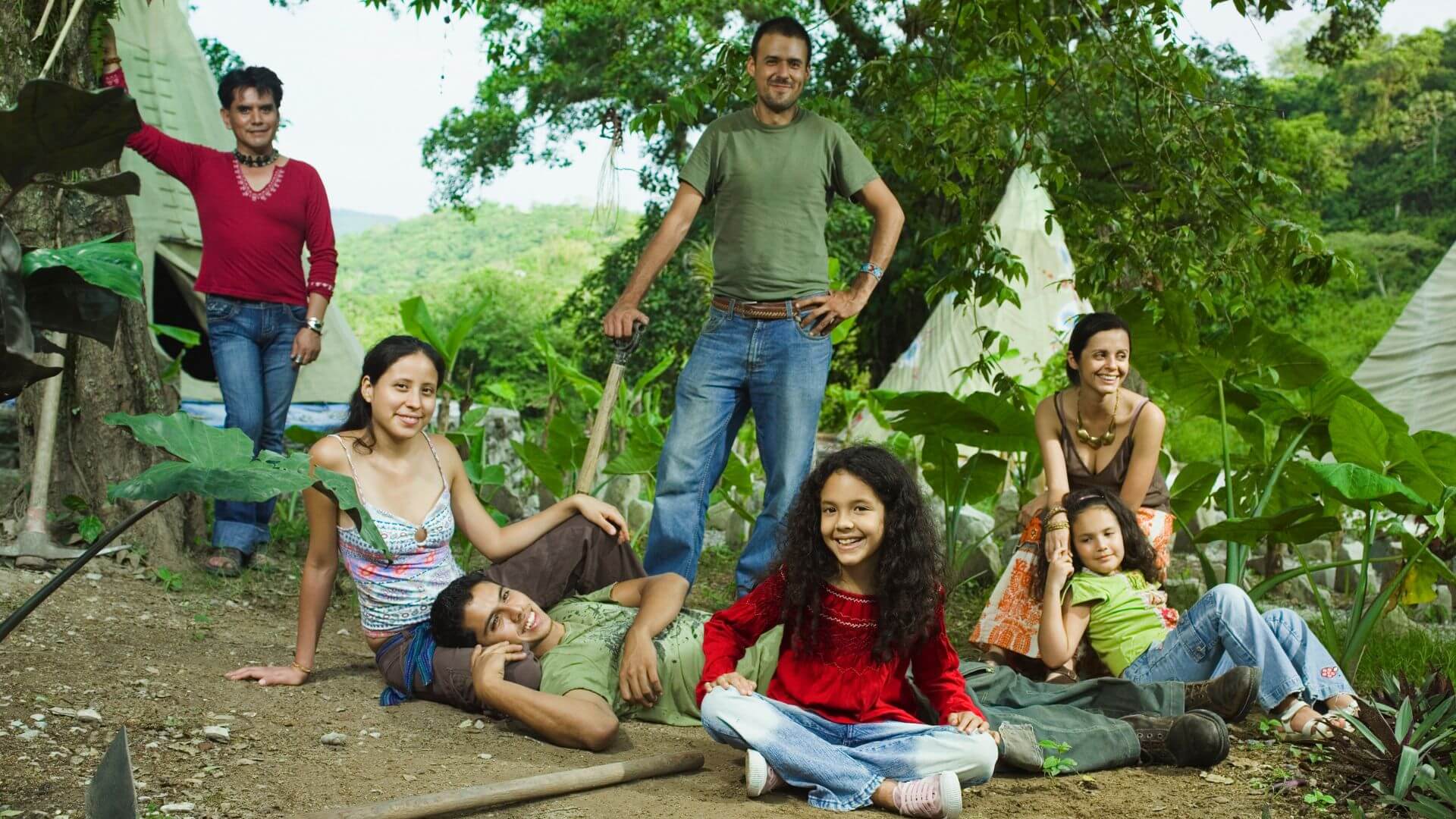Off the Grid Living Synthesis Essay: The allure of escaping the modern grid’s constraints is undeniable. This exploration delves into the multifaceted world of self-sufficient living, examining the technological innovations, social implications, environmental impacts, and economic realities of choosing a life beyond the reach of conventional utilities. From solar-powered homes to sustainable farming practices, we uncover the challenges and rewards of embracing a life less ordinary.
This essay synthesizes research across various disciplines to present a comprehensive overview of off-grid living. We will analyze diverse lifestyles, compare renewable energy sources, and evaluate the long-term sustainability of various off-grid models. The goal is to provide a balanced perspective, weighing the romantic ideals against the practical realities of this increasingly popular lifestyle choice.
Off-Grid Living: A Comprehensive Overview
The allure of off-grid living, a lifestyle characterized by self-sufficiency and minimal reliance on external infrastructure, is growing. This exploration delves into the multifaceted aspects of this increasingly popular choice, examining its technological underpinnings, social implications, economic considerations, and practical challenges.
Defining “Off the Grid” Living
The term “off-grid” encompasses a spectrum of lifestyles, ranging from complete self-sufficiency – producing all one’s energy, water, and food – to partial reliance on external systems, such as purchasing some food or using limited grid electricity. Examples include individuals living in remote cabins powered solely by solar energy, families practicing sustainable agriculture and rainwater harvesting, and communities sharing resources and skills to maximize self-reliance.
Challenges vary widely, from initial high capital investment and the need for specialized skills to potential social isolation and the unpredictability of natural resources.
Motivations for embracing this lifestyle are diverse. Some seek environmental sustainability, others desire greater independence and self-reliance, while some are driven by a desire for simpler living and a closer connection to nature. Others may be motivated by economic factors, seeking to reduce their living costs.
Technological Aspects of Off-Grid Living

Source: thecoffeemom.net
Successful off-grid living relies heavily on appropriate technology. Essential systems include renewable energy generation (primarily solar photovoltaic and wind power), water harvesting and purification, and waste management systems (composting toilets, greywater recycling).
Renewable energy sources offer diverse advantages and disadvantages. Solar power, for instance, is readily available in sunny locations, but its output is intermittent and dependent on weather. Wind power offers a consistent energy source in windy areas, but requires significant upfront investment and can be noisy. Hydropower, where feasible, provides a reliable source, but may have environmental impacts.
A hypothetical off-grid energy system for a rural location in a sunny, moderately windy climate might incorporate the following:
| Energy Source | Capacity | Pros | Cons |
|---|---|---|---|
| Solar PV | 5kW | Abundant sunlight, relatively low maintenance | Intermittent power, high initial cost |
| Wind Turbine (small scale) | 1kW | Consistent energy in windy conditions | Noise pollution, potential bird mortality |
| Battery Storage | 10kWh | Provides power during nighttime or low-energy periods | Limited lifespan, requires periodic replacement |
Social and Environmental Considerations, Off the grid living synthesis essay
Off-grid living presents both social and environmental implications. While it can foster strong community bonds through shared resources and mutual support, it can also lead to social isolation, particularly in remote areas. Environmentally, the positive impacts include reduced carbon footprint and decreased reliance on fossil fuels. However, some off-grid practices, if not carefully managed, can negatively impact local ecosystems, for example, through unsustainable water use or improper waste disposal.
A comparison with conventional lifestyles shows a significant reduction in greenhouse gas emissions and resource consumption in many off-grid scenarios, but careful planning and responsible practices are essential to mitigate potential negative environmental impacts.
Economic Aspects of Off-Grid Living
Establishing an off-grid setup involves significant upfront investment in infrastructure, such as solar panels, water collection systems, and building materials. Long-term economic benefits include reduced utility bills and increased self-sufficiency in food and energy production. However, there are also potential drawbacks, including the need for ongoing maintenance and repairs, and the potential loss of income from traditional employment. The possibility of complete economic self-sufficiency depends largely on factors such as location, climate, available resources, and individual skills.
Practical Challenges and Solutions
Food production and preservation pose significant challenges in off-grid environments. Effective strategies are crucial for ensuring year-round food security.
- Challenge: Seasonal limitations on food production.
- Solution: Preservation techniques (canning, freezing, drying), diverse crop selection, greenhouse cultivation.
- Challenge: Pest and disease control.
- Solution: Integrated pest management techniques, crop rotation, resistant varieties.
- Challenge: Maintaining soil fertility.
- Solution: Composting, cover cropping, crop rotation.
Water resource management requires careful planning and efficient systems. Rainwater harvesting, greywater recycling, and efficient irrigation techniques are essential. Waste management relies on composting toilets, greywater recycling, and responsible disposal of non-compostable waste.
A comprehensive off-grid living synthesis essay necessitates a thorough understanding of the practical realities involved. Successfully navigating this lifestyle requires addressing numerous hurdles, as detailed in this insightful article on off grid living challenges. Therefore, a robust synthesis essay must account for these challenges to offer a complete and nuanced perspective on the subject.
Illustrative Examples of Off-Grid Communities
Two contrasting examples illustrate the diversity of off-grid living. The first, a small, self-sufficient community in rural Oregon, focuses on sustainable agriculture and renewable energy, emphasizing community collaboration and resource sharing. Daily life revolves around farming, tending livestock, and maintaining shared infrastructure. In contrast, a remote homestead in Alaska prioritizes individual self-reliance, with a focus on hunting, fishing, and off-grid energy production.
Daily life centers on providing for immediate needs and adapting to the harsh climate.
| Community Name | Location | Key Features | Challenges Faced |
|---|---|---|---|
| Example Community 1 | Rural Oregon | Sustainable agriculture, shared resources, strong community bonds | Limited access to healthcare, potential for internal conflict |
| Example Community 2 | Remote Alaska | Individual self-reliance, hunting, fishing, off-grid energy | Harsh climate, limited access to resources, social isolation |
The Future of Off-Grid Living

Source: offgridharmony.com
Technological advancements, such as improved solar panel efficiency, advanced battery storage, and smart energy management systems, will enhance the accessibility and sustainability of off-grid living. Off-grid lifestyles have the potential to play a significant role in mitigating climate change by reducing reliance on fossil fuels and promoting sustainable resource management. Future trends may include the integration of off-grid technologies into more mainstream lifestyles, creating more resilient and sustainable communities.
The increasing awareness of environmental issues and the desire for greater self-reliance will likely drive the continued growth of off-grid living.
Final Conclusion: Off The Grid Living Synthesis Essay
Ultimately, the off-grid movement presents a complex tapestry woven from technological ingenuity, environmental consciousness, and a yearning for self-reliance. While challenges remain, the potential for a more sustainable and equitable future through innovative off-grid solutions is undeniable. As technology advances and societal priorities shift, the future of off-grid living promises to be one of both continued evolution and growing influence on how we interact with our environment and each other.
